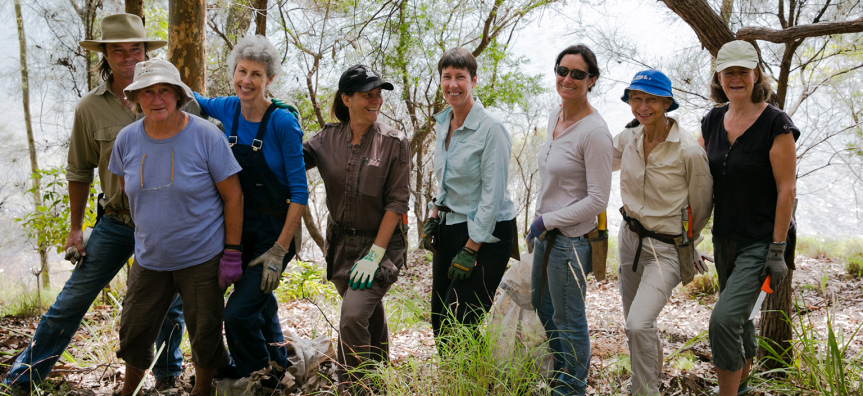
The greatest threat to our wildlife in the Northern Beaches is loss of habitat. You can help by creating your own native garden. The best native gardens provide different layers and include tall, medium and small trees, shrubs and ground covers.
View the native plant species guide to find local native plants and tree species for your ward.
Food
Native animals need a wide variety of food. Seeds from eucalypts and wattles provide a tasty meal for many native birds while others feed on nectar producing plants like bottlebrushes and grevilleas. Fruit eaters love berry producing plants like lilly pilly, blue flax lily and blueberry ash. Plants also attract insects which in turn provide food for the local wildlife.
Tip: do not feed native wildlife with human food. It is much better for them to feed from the natural resources you have planted.
Shelter
To provide the best protection and shelter for wildlife in your garden, create a variety of layers to encourage different species. Use tall, medium and small trees and shrubs. Scramblers, vines and ground plants will shelter ground feeders such as small birds and reptiles.
Tree Hollows
Trees with hollows are used as nesting sites by many animals such as parrots, kookaburras, possums and gliders. These hollows occur in large mature trees or dead trees, but nesting boxes can be a great substitute.
Nesting Boxes
Nest boxes can be used to supplement the declining number of tree hollows and the design and materials will usually need to be specific for targeted species. Nest box locations should be quiet, up over four metres, safe from predators and sheltered from prevailing winds and the midday sun. The box should be positioned so animals can easily get in and out and so they can reach nearby branches. See specific information for constructing a nest box.
Water
Creating a pond will encourage frogs, lizards and most birds into your garden. Place your pond away from bedrooms and neighbours’ houses as frogs can be noisy. To protect small ground animals, plant dense vegetation around the pond and scatter rocks and logs. Partial shade is also important. You can also consider installing a birdbath away from predators. Instructions on building a frog pond
Children and Pets
Teach your children to observe, respect and enjoy wildlife. Install a fully enclosed cat run. Provide a dog-free area in your garden where birds can feed and lizards sunbathe. Keep pets indoors at night.
Pest Control
Encourage natural pest controllers to come into your garden such as blue tongue lizards, leaf tail geckos and bandicoots by providing rocks and logs for them to live in. These animals assist in controlling pests such as snails, cockroaches, slugs, lawn beetles and spiders.
Weeds, Pesticides and Fertilisers
Keeps weeds under control but avoid pesticides and fertiliser. They can be toxic to small children and animals, and they can end up in our waterways.
